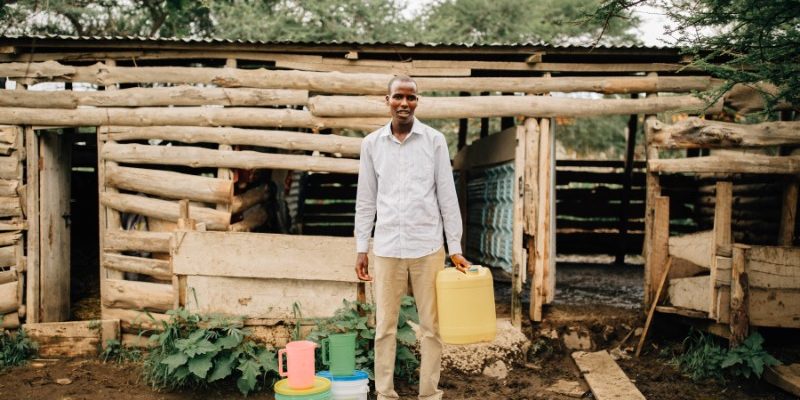In September 2015, 193 United Nations (UN) member states adopted 17 sustainable development goals (SDGs) to be pursued by 2030, and pledged to “leave no one behind” while endeavoring to reach “the furthest behind first.”
What does this mean? Individuals are left behind when they are trapped in cycles of extreme poverty. They are left behind as they are accustomed to discrimination and systemic disadvantages inhibiting them from moving forward. They are left behind when they are excluded from opportunities and lack choices to participate and benefit from even in the progress of an economy compared to others in their societies. While economic prosperity is necessary, it does not always create decent jobs or address economic inequalities persisting in countries. As a result, economic inequalities are a global concern.
 There is an established need for inclusive societies where social and economic injustices occurring are tackled and the ones who are most affected by them do experience change. In our consistent efforts of bringing pre-primary education to the vulnerable areas in East Africa, ensuring decent jobs through biogas projects, and empowering women to be self-sustainable, Loom aims to address some of these economic injustices social innovators face to catalyze sustainable development.
There is an established need for inclusive societies where social and economic injustices occurring are tackled and the ones who are most affected by them do experience change. In our consistent efforts of bringing pre-primary education to the vulnerable areas in East Africa, ensuring decent jobs through biogas projects, and empowering women to be self-sustainable, Loom aims to address some of these economic injustices social innovators face to catalyze sustainable development.
Imagine the reality of a Rwandan woman struggling to secure employment and a living wage amidst discrimination. Think of rural Ugandan villagers separated by geographical barriers and lack of public services such as transportation, schools, and electricity. When resources are lacking at the most basic level, individuals are more likely to be trapped in poverty cycles for generations.
Economic inequalities can include other forms of discrimination such as by disability (currently the world’s largest minority), socio-economic status, a lack of healthcare limiting one’s life expectancy, a lack of financial services that could have offered loans, and people displaced by conflict. Often, the exclusiveness and ineffectiveness of governance play a significant role in stagnant growth for individuals whether that is through unjust laws, inequitable policies, or inadequate distribution of resources.

Living in such conditions, it is not unimaginable for children to dream of different or better futures from their parents. Perhaps, this is why it is essential to recognize that sustainable development, as the UN defines, is ensuring that the present needs are met without jeopardizing the chances of future generations to meet their own needs. To transform into such just and resilient societies, it is imminent that the current inequalities contributing to the declining progress of the majority are globally addressed. Greater investments are required in health, education, and creating employment particularly to the young and the disadvantaged in the society. Within countries, individuals from various sectors need an equal distribution of resources, equal opportunity, eradicating discriminatory policies and promoting inclusiveness.
Between countries, supporting low-income countries through strategic free trade, and exports could also potentially enhance their economies. In this age of globalization, there is a need for governments and mediators to refine their foreign policies to ensure safe migration for the millions of people escaping their homes due to poverty, conflict, and discrimination. These efforts cannot be superficial or only target a selected group of people. To break the cycles of economic and social exclusion, the voice of the vulnerable – primarily in decision-making – needs to be better represented for accountability and effectiveness.
 While governments do have a greater responsibility to transform their institutions, individuals also need to become agents of change – whether that is through advocacy or in partnership with organizations who are challenging social inequalities through innovative means. Many times, there is a gap in acquiring accurate information on most vulnerable individuals. Often, even with data, the complex issues faced by the most disadvantaged might not be completely comprehended or confronted. This is where Loom’s bottom-up approach of partnerships with local innovators becomes essential. With consistent local engagement and feedback, there is a better scope for continuous learning and relearning of what could work and establish appropriate means of reaching that sustainable effect.
While governments do have a greater responsibility to transform their institutions, individuals also need to become agents of change – whether that is through advocacy or in partnership with organizations who are challenging social inequalities through innovative means. Many times, there is a gap in acquiring accurate information on most vulnerable individuals. Often, even with data, the complex issues faced by the most disadvantaged might not be completely comprehended or confronted. This is where Loom’s bottom-up approach of partnerships with local innovators becomes essential. With consistent local engagement and feedback, there is a better scope for continuous learning and relearning of what could work and establish appropriate means of reaching that sustainable effect.
But is achieving equality for all a realistic goal? By the current UN statistics, between 2010 and 2016, 60 out of 94 countries with data show a swift increase in the income levels of the poorest 40 percent as compared to the rest of the population. With such improvements, however gradual, it is not impossible to think of communities attaining freedom from need.
Though “leaving no one behind” in practice is not as simple as it sounds, the notion itself commits to the belief that despite the differences of nationality, race, and borders, we stand as one for a world with just and equal societies that work for everyone.
– by Nissi Undurthi








